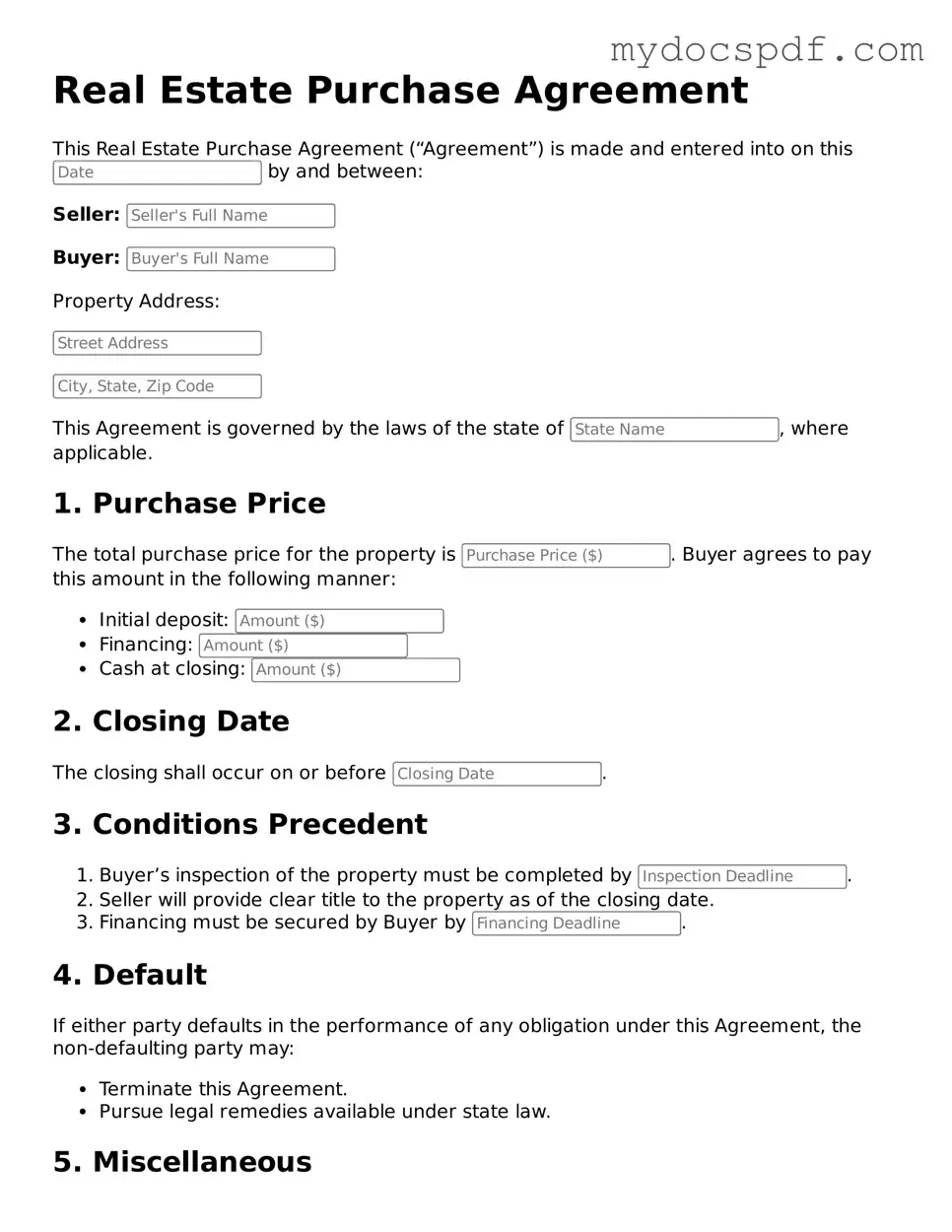Attorney-Approved Real Estate Purchase Agreement Template
A Real Estate Purchase Agreement is a legally binding document that outlines the terms and conditions of a property sale between a buyer and a seller. This form serves as a roadmap for the transaction, detailing important aspects such as the purchase price, closing date, and any contingencies. Understanding this agreement is crucial for anyone involved in buying or selling real estate.
Access Editor Here
